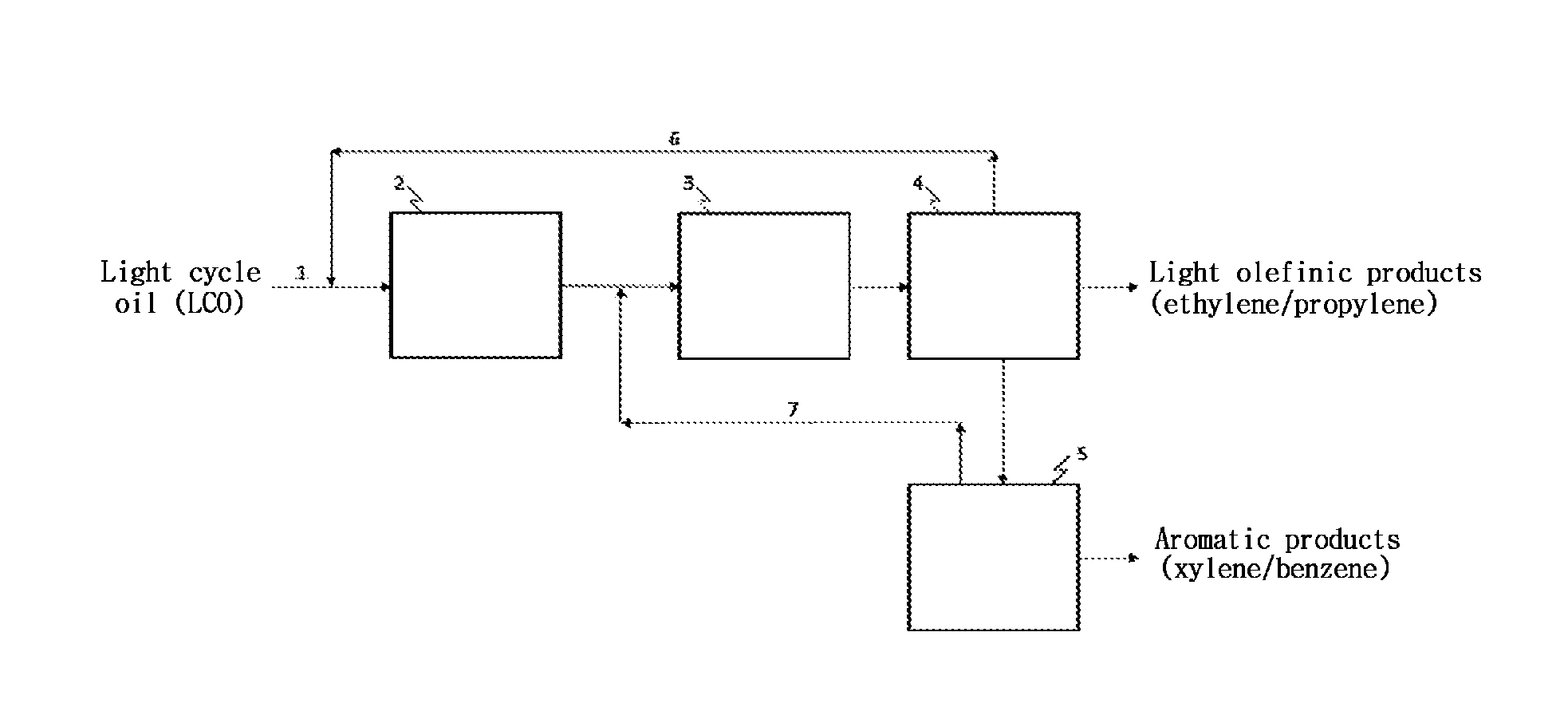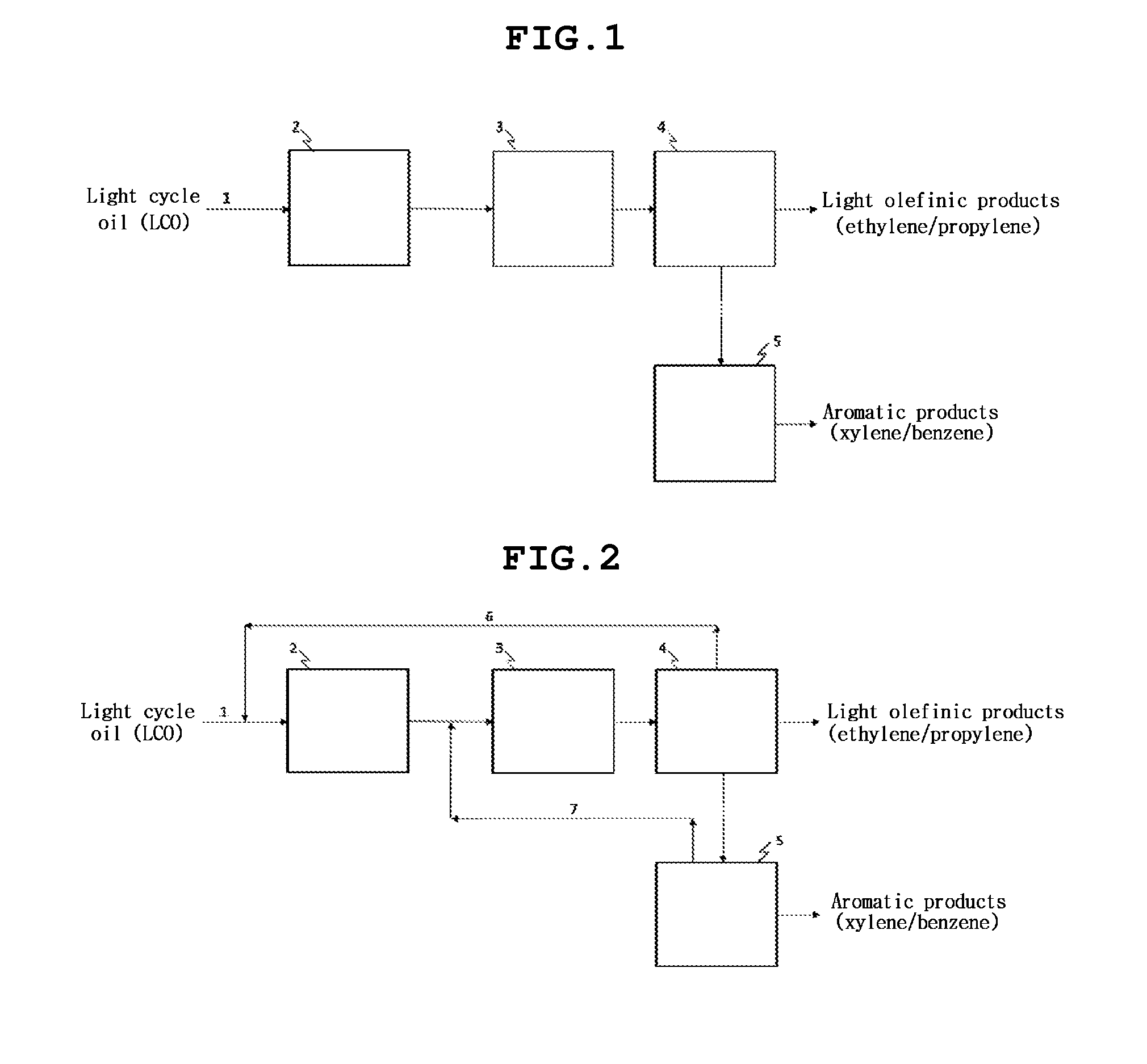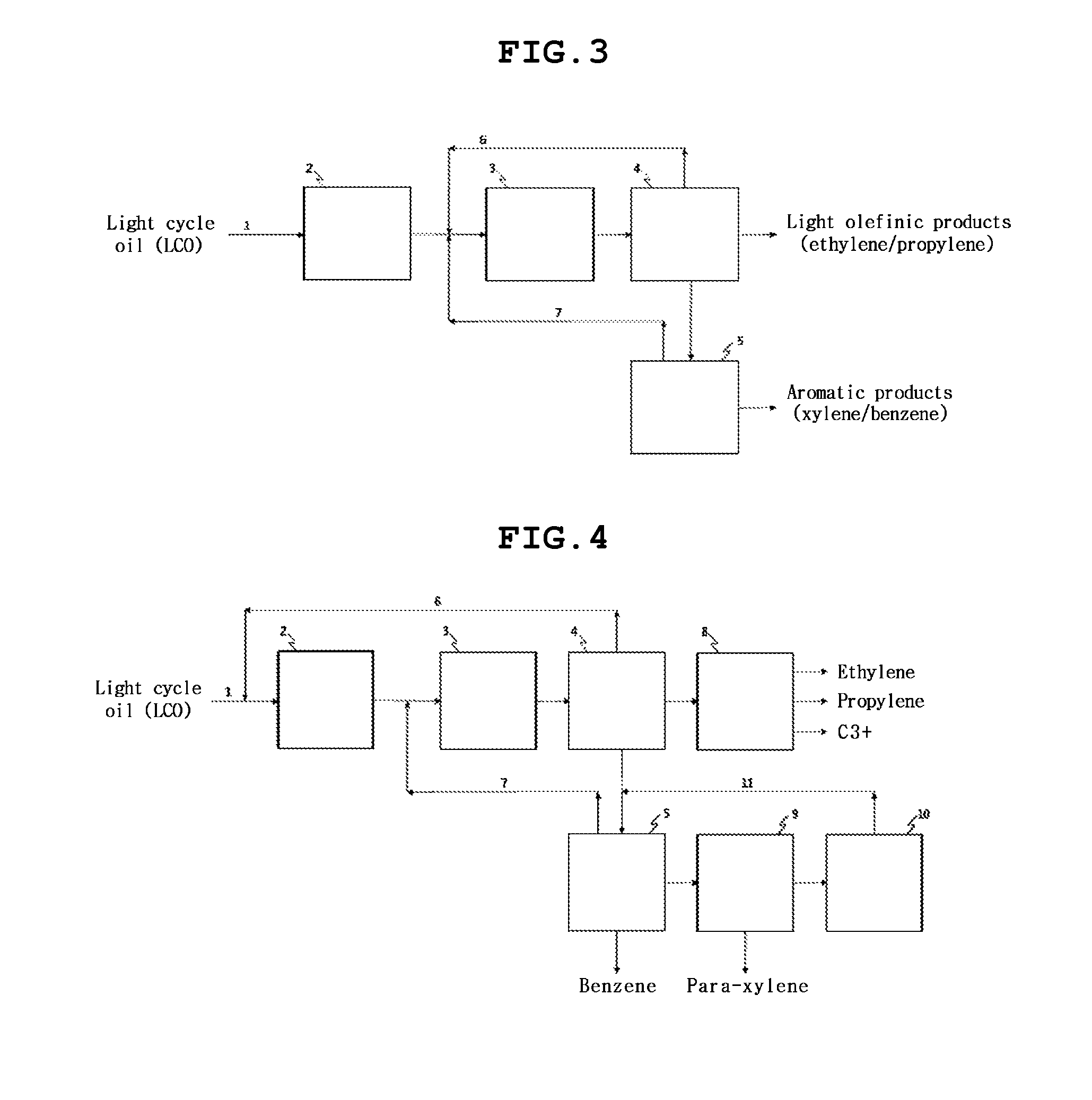Method for producing high-added-value aromatic products and olefinic products from an aromatic-compound-containing oil fraction
a technology of aromatic compounds and oil fractions, which is applied in the direction of hydrocarbon preparation catalysts, hydrocarbon oil treatment products, bulk chemical production, etc., can solve the problems of increasing the demand for aromatic products, the cost of additional treatment of lco is high, and the conventional technology for producing aromatic products cannot keep up with the increase in aromatic demand, so as to increase the value of aromatic products and maximize the added value of final products , the effect of increasing the production of aromatic products
- Summary
- Abstract
- Description
- Claims
- Application Information
AI Technical Summary
Benefits of technology
Problems solved by technology
Method used
Image
Examples
example 1
[0089]As the light cycle oil used in the method of present invention, as shown in Table 1 below, light cycle oil, which is an oil fraction produced by a fluidized catalytic cracking process and having a boiling point range of 170 to 360, was provided.
[0090]
TABLE 1FeedParaffin + Olefin4.680Ethylene—Propylene—Butylene—Naphthene0.502Total amount of aromatics84.1211-ring aromatics39.0241-ring aromatics not having26.951naphthenic ringBTX + C99.431B + X1.473T + C97.958B0.024T0.344X1.449C97.6141-ring aromatics having one12.072naphthenic ring1-ring aromatics having two—naphthenic rings2-ring aromatics40.9752-ring aromatics not having38.398naphthenic ring2-ring aromatics having one2.577naphthenic ring2-ring aromatics having two—naphthenic rings3-ring aromatics4.123Others10.697
[0091]In Example 1, since feed is light cycle oil of FCC process, the physical properties, composition and yield of the oil fraction may be changed depending on the kind of raw material used and the operation conditions...
example 2
[0109]Example 2 was carried out using the same feed and reaction conditions as in Example 1.
[0110]Further, Example 2 was carried out in the same manner as in Example 1, except that i) aromatic components of 2 rings or more, ii) 1-ring aromatics that cannot be converted into raw materials of high value-added aromatic products because they have a hydrocarbon group of two or more carbon atoms, iii) 1-ring aromatics that are not high value-added aromatic products and cannot be converted into raw materials of high value-added aromatic products because they have a naphthenic ring and iv) other components that are not high value-added aromatic products and cannot be converted into raw materials of high value-added aromatic products, the components i), ii), iii) and iv) having been produced by the fluidized catalytic cracking step after the hydroprocessing step, were recirculated such that these components i), ii), iii) and iv) were mixed with the light cycle oil introduced into the hydropr...
example 3
[0115]Example 3 was carried out using the same raw materials and reaction conditions as in Example 1.
[0116]Further, Example 3 was carried out in the same manner as in Example 1, except that a step of recirculating i) aromatic components of 2 rings or more, ii) 1-ring aromatics that cannot be converted into raw materials of high value-added aromatic products because they have a hydrocarbon group of two or more carbon atoms, iii) 1-ring aromatics that are not high value-added aromatic products and cannot be converted into raw materials of high value-added aromatic products because they have a naphthenic ring and iv) other components that are not high value-added aromatic products and cannot be converted into raw materials of high value-added aromatic products, the components i), ii), iii) and iv) having been produced by the fluidized catalytic cracking process after the hydroprocessing step, and thus mixing the components i), ii), iii) and iv) with the light cycle oil introduced into ...
PUM
| Property | Measurement | Unit |
|---|---|---|
| pore size | aaaaa | aaaaa |
| molar ratio | aaaaa | aaaaa |
| particle size | aaaaa | aaaaa |
Abstract
Description
Claims
Application Information
 Login to View More
Login to View More - R&D
- Intellectual Property
- Life Sciences
- Materials
- Tech Scout
- Unparalleled Data Quality
- Higher Quality Content
- 60% Fewer Hallucinations
Browse by: Latest US Patents, China's latest patents, Technical Efficacy Thesaurus, Application Domain, Technology Topic, Popular Technical Reports.
© 2025 PatSnap. All rights reserved.Legal|Privacy policy|Modern Slavery Act Transparency Statement|Sitemap|About US| Contact US: help@patsnap.com



